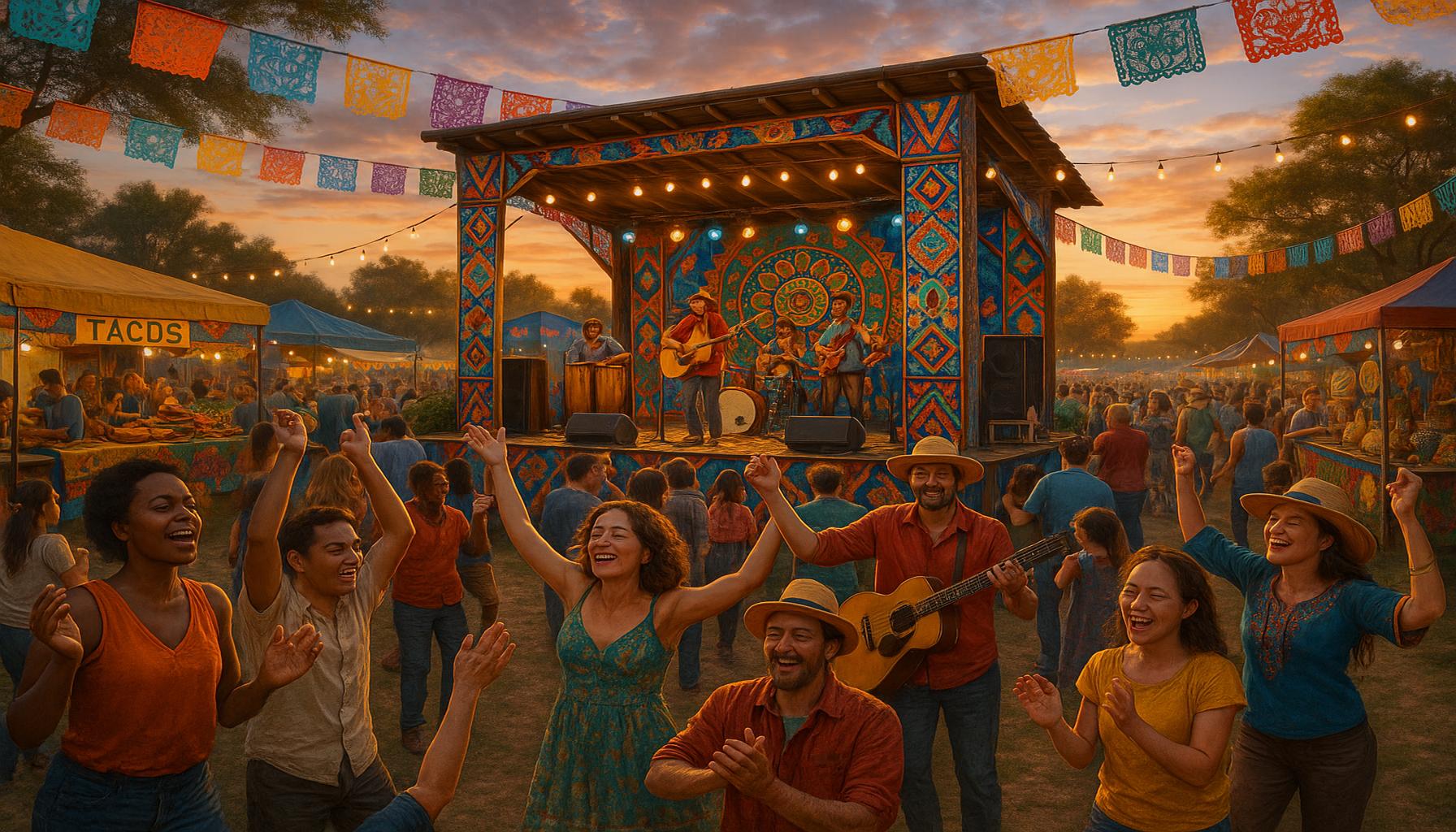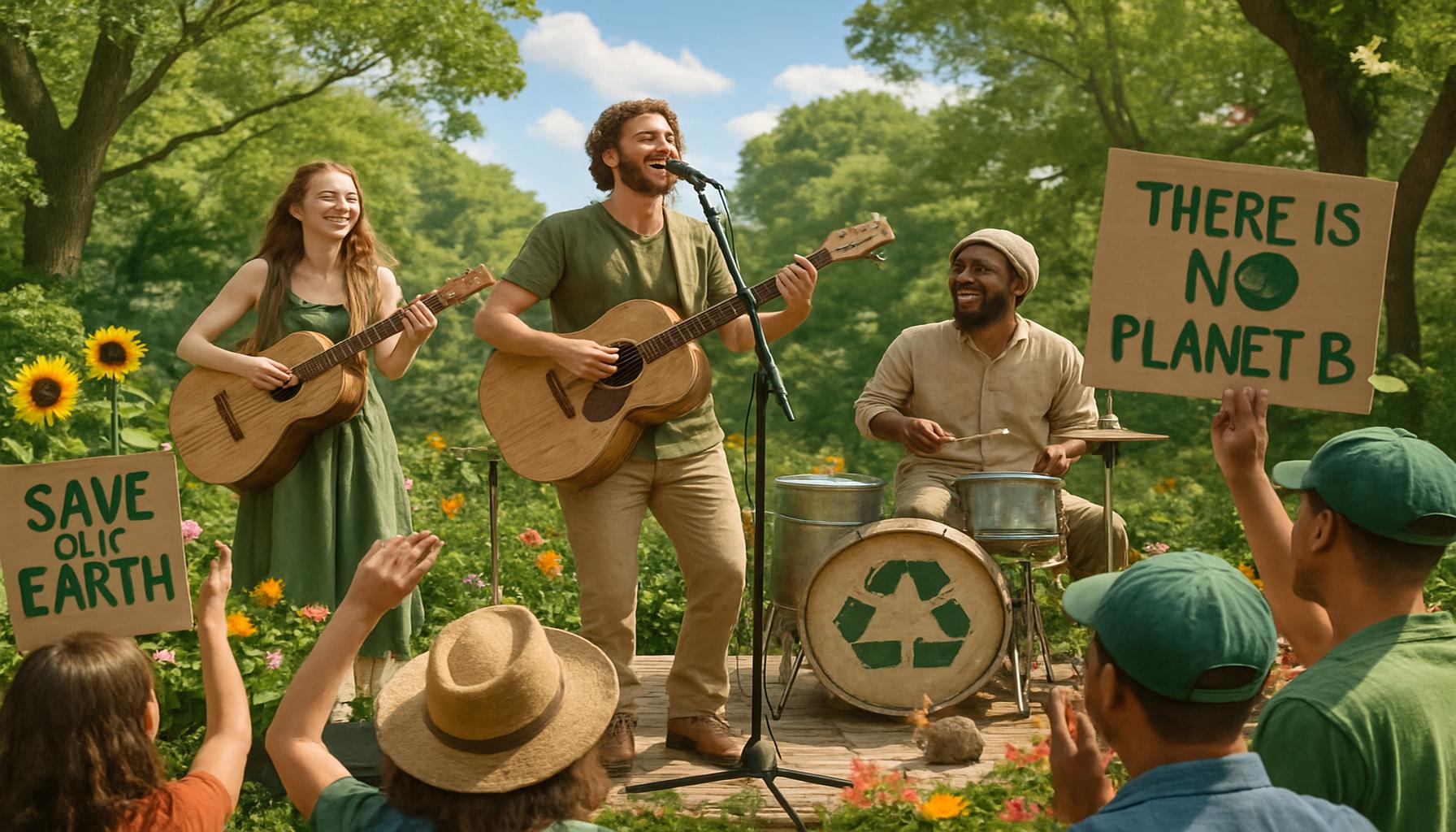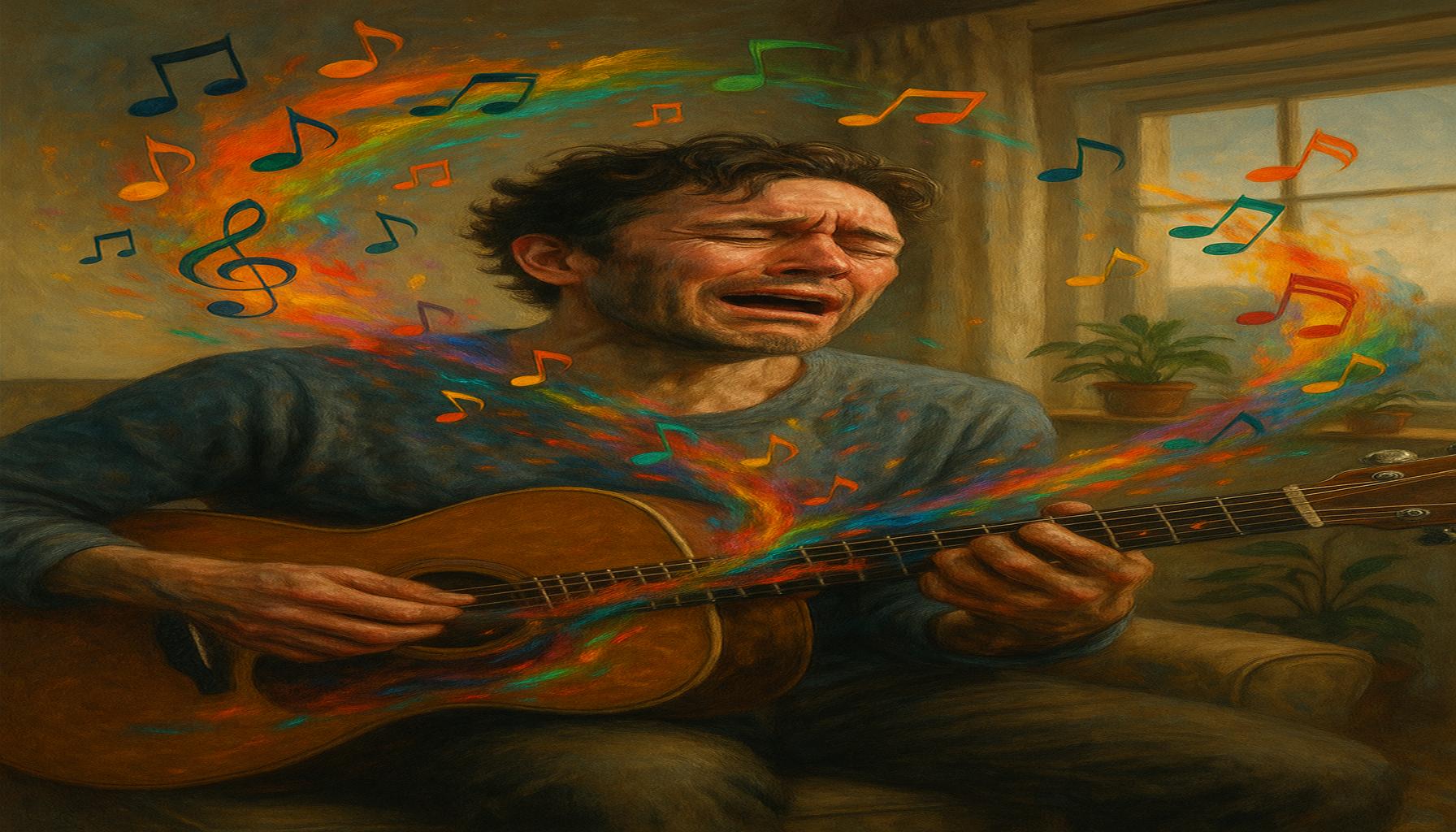Music as a Form of Protest: Analyzing the History of Songs that Challenged the Status Quo
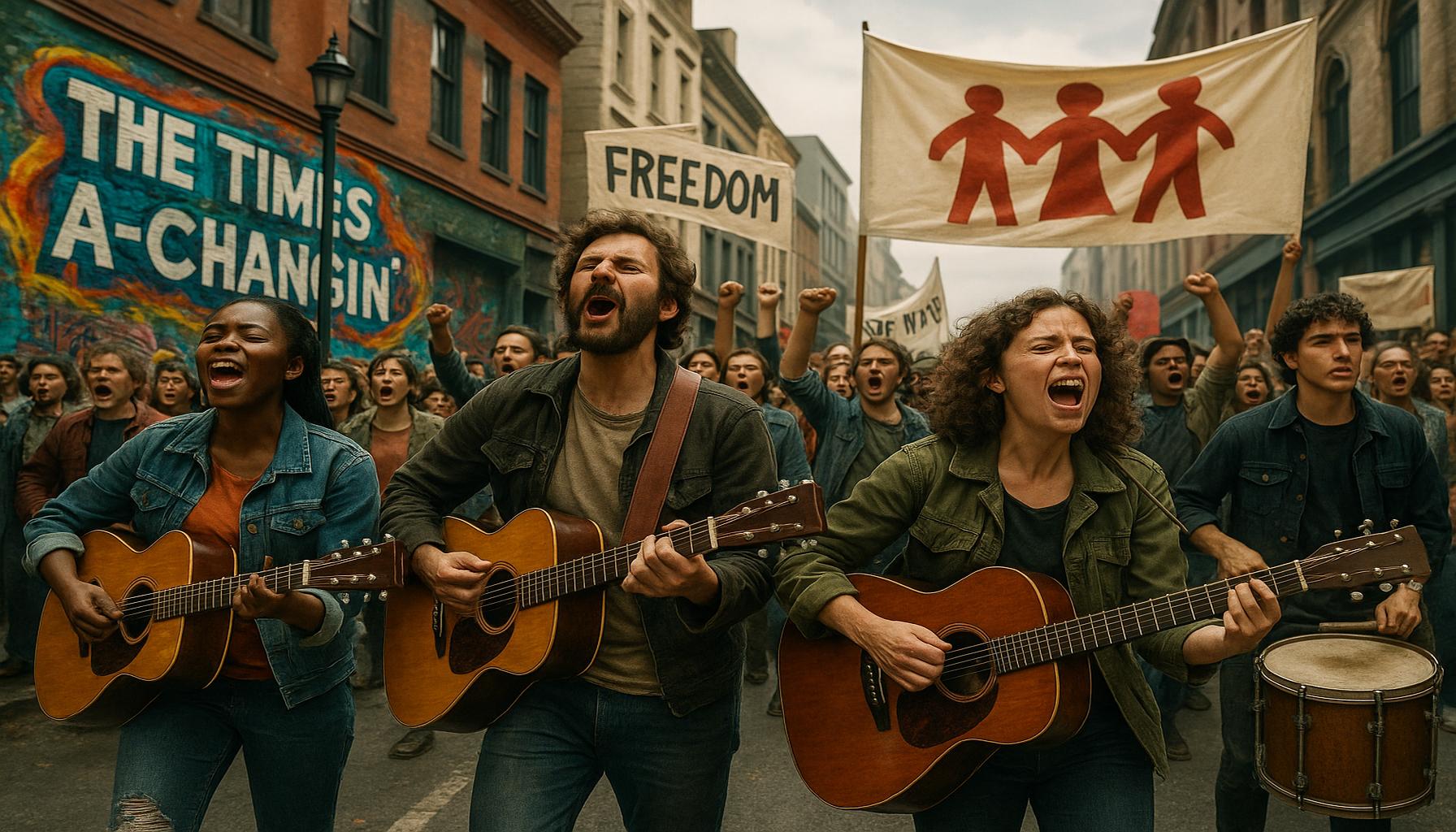
Exploring the Power of Music in Protests
In the landscape of social activism, music has often emerged as a universal language capable of uniting individuals around a common cause. Throughout history, musicians have adeptly intertwined their lyrical narratives with the zeitgeist of their times, effectively channeling the collective emotions and sentiments of communities grappling with oppression, inequality, and systemic injustices. These musical expressions transcend mere entertainment; they encapsulate the struggles, hopes, and aspirations of diverse populations, acting as catalysts for social change.
- Iconic Protest Songs: A prime example of the power of song as a form of protest is found in Bob Dylan’s “The Times They Are a-Changin’,” an anthem that became synonymous with the 1960s civil rights movement. The song urged the younger generation to embrace change and challenge outdated societal norms. Similarly, Billie Holiday’s harrowing “Strange Fruit” starkly addresses the brutal realities of racism and lynching in America. Its haunting imagery and lyrical depth serve as a poignant reminder of the historical pain endured by African Americans.
- Genres Colliding: The fusion of various musical styles has led to powerful protest anthems across genres. The folk movements of the 1960s, for instance, drew on traditional melodies and storytelling to convey messages of hope and resistance. Fast forward to the 21st century, and we see hip-hop as a formidable force for activism, with artists like Kendrick Lamar using their platforms to address issues like police brutality and economic injustice in tracks like “Alright,” which has become an unofficial anthem of the Black Lives Matter movement.
- Historical Context: Each protest song emerges not only from personal experience but also from a broader socio-political backdrop. For example, during the Vietnam War, songs like Crosby, Stills, Nash & Young’s “Ohio” resonated deeply with a generation questioning government decisions and military actions. Similarly, the Great Depression saw the rise of folk artists who used their music to address economic disparity, giving voice to the struggles faced by the working class.
Understanding the historical significance of these tracks illuminates the evolving dialogue around social justice in America. Each protest song serves as documentation of its time, reflecting both the socio-political climate and the emotional turmoil present in society. From sit-ins to marches, music has played a crucial role in mobilizing individuals and fostering community around shared beliefs.
As we delve deeper into this rich tapestry of musical protest, it becomes evident that the legacies of these songs remain potent and relevant in today’s struggles for equality and justice. The ongoing fight against systemic racism, environmental degradation, and economic inequality continues to inspire new generations of artists who are committed to using their voices as instruments of change.
Join us in exploring the profound impact of music as a form of protest and experiencing the enduring legacies of the anthems that have shaped societal movements across the United States and beyond.
DIVE DEEPER: Click here to learn about eco-friendly crafting
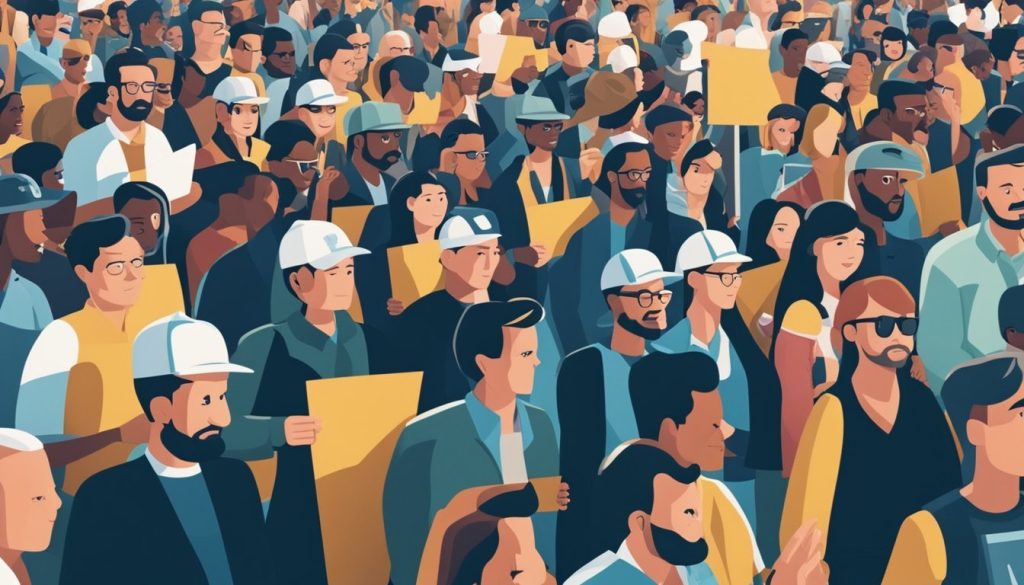
The Evolution of Protest Music Through the Decades
Music has long been a powerful tool for social commentary and dissent. Stretching back to the early 20th century, songs not only captured the spirit of the times but also articulated the frustrations of the oppressed. This historical journey of protest music highlights how various genres have emerged as vessels for change, galvanizing movements and providing a voice for the voiceless.
- The 1930s: Labor Movements and Folk Music – The Great Depression gave rise to folk music, which became a vehicle for expressing the struggles of the working class. Songs like “Which Side Are You On?” by Billy Bragg and later adaptations of Woody Guthrie’s “This Land Is Your Land” served as rallying cries for labor rights, emphasizing collective action in times of dire economic hardship.
- The 1960s: Civil Rights and Anti-War Protests – The civil rights movement saw an explosion of songs that challenged racial injustice and sought equality. As a prime example, Sam Cooke’s “A Change Is Gonna Come” became an anthem of hope amidst adversity. Concurrently, the anti-war sentiment surrounding the Vietnam War birthed tracks like Phil Ochs’ “I Ain’t Marching Anymore,” which directly confronted military engagement and government accountability.
- The 1980s: Voices Against Oppression – The rise of punk rock in the late ’70s and throughout the ’80s echoed the frustrations of youth disenfranchised by political indifference. Bands like The Clash and their song “Clampdown” highlighted injustices, while hip-hop artists emerged a decade later, using hard-hitting beats and poignant lyrics to speak to systemic racism and inequality. Tracks such as Public Enemy’s “Fight the Power” boldly demanded attention to social issues.
- The 21st Century: Modern Activism through Hip-Hop and Pop – In recent years, artists have continued to use their platforms to address pressing issues. Songs like “Formation” by Beyoncé and Childish Gambino’s “This Is America” tackle themes of race, identity, and gun violence, intertwining personal narratives with broader societal critiques. The catchy hooks and vibrant visuals lead to discussions both in casual conversations and on social media, amplifying the protest message.
Each decade reveals a unique evolution in the role of music as a form of protest, illustrating how artists respond to societal challenges through their work. This progression from folk songs in the 30s to modern hip-hop illustrates not just a change in musical styles, but also an enduring commitment to advocacy through art.
Furthermore, the historical context behind these protest songs showcases the innate human desire for justice and equality. With each musical generation, artists harness their creativity to reflect and influence the socio-political landscape of America, encouraging listeners to engage, reflect, and act. As we continue our exploration, it’s essential to recognize the lasting impact of these anthems—both in history and in shaping contemporary movements.
| Category | Advantages |
|---|---|
| Historical Impact | Influences social movements and prompts societal change. |
| Cultural Reflection | Mirrors the grievances of the population, serving as a call to action. |
| Empowerment | Gives voice to the marginalized, fostering a sense of unity and motivation. |
Throughout history, music has served as a powerful tool for protest, transcending cultural and geographical boundaries. Historically significant tracks, such as Bob Dylan’s “The Times They Are a-Changin'” and Kendrick Lamar’s “Alright,” have sparked conversations surrounding civil rights and social justice. These songs highlight not merely a form of entertainment but rather a compelling medium for activism and awareness. As societal norms evolve, music continues to be a reflecting pool of the prevailing sentiments among people. The lyrical content often echoes the frustrations and hopes of those seeking change, allowing for the empowerment of the many who feel unheard. Thus, protest songs not only challenge the status quo but also contribute substantially to the larger dialogue concerning justice, equality, and identity.By analyzing these songs, we can uncover the profound ways in which artistic expression intersects with political movements, creating a legacy that inspires subsequent generations to voice their concerns through the universal language of music.
DIVE DEEPER: Click here to uncover the fusion of creativity and technology
Impact of Technology and Social Media on Protest Music
The last two decades have witnessed a dramatic shift in the way protest music is created, disseminated, and received, largely catalyzed by advancements in technology and the rise of social media platforms. These innovations have not only democratized music production but have also broadened the reach of protest messages across diverse demographics. This intersection of technology and protest music has generated a potent combination that continues to inspire social movements around the globe.
- The Digital Age and Accessibility – With the advent of digital music platforms and social media, artists can bypass traditional gateways to share their messages directly with listeners. The availability of tools for home recording and distribution has empowered independent artists to produce and spread music without the need for corporate sponsorship. This democratization was evident in the viral spread of tracks like “Fight Song” by Rachel Platten, which resonated particularly during grassroots movements such as women’s marches, exemplifying how quickly a song can gain traction and incite change.
- Viral Moments and Hashtag Movements – In the context of social media, protest songs often accompany trending hashtags that encapsulate broader movements, making the music part of a collective consciousness. For example, Childish Gambino’s “This Is America” was released just days before widespread protests against gun violence and racial injustice. The song’s powerful visuals and lyrics led to it becoming a viral sensation on platforms like Twitter and Instagram, further enhancing discussions about systemic issues and sparking conversations even beyond music.
- Collaborative Activism – Online music platforms have also facilitated collaborations among artists across genres and backgrounds. Events like #BlackLivesMatter and #MeToo gained momentum not only through protests on the streets but also through songs that vocalize experiences of oppression and resilience. Collaborations such as “Stronger Together,” featuring artists like Alicia Keys, showcase the capacity of protest music to evolve through collective artistic effort, highlighting diverse voices united against common injustices.
- The Influence of Music Videos – Music videos have emerged as critical storytelling mediums that enhance the message conveyed by the lyrics. They provide a vivid context and emotional depth to the song’s themes. For instance, the visual narrative in Beyoncé’s “Formation” not only celebrates Black culture but also critiques societal norms related to race and gender. By effectively utilizing visually arresting imagery, these videos can inspire viewers to reflect on pressing social issues and mobilize for change.
As we delve deeper into the relationship between music and protest, it becomes clear that the evolution of technology has reshaped the landscape of advocacy. Artists leverage the immediacy of digital platforms to influence, connect, and engage with larger audiences. This interactive connection is central to how music continues to inspire social movements—turning melodies into manifestos that challenge the status quo.
Moreover, the dialogic relationship between protest music and its audience underscores a shift where listeners do not just receive messages passively; they actively participate in creating dialogues that resonate within their communities. As protest music evolves, it remains a testament to the enduring power of artistic expression in the fight for justice and equality.
DIVE DEEPER: Click here to uncover more sustainable craft inspirations!
Conclusion: The Unwavering Voice of Protest
Throughout history, music has served as an indomitable force for social change, its melodies echoing the sentiments of the oppressed and marginalized. From the anthems of the civil rights movement to the contemporary tracks emerging from digital platforms, the evolution of protest music reveals a consistent thread: the ability of artists to articulate the struggles faced by their communities. As we have explored, protest music is not just about melody; it represents a powerful mode of resistance and expression that transcends boundaries.
The intersection of music and activism has been significantly enhanced by modern technology, enabling artists and listeners to share their messages more broadly and instantly than ever before. This digital revolution empowers grassroots movements, encouraging victims of injustice to speak out collectively. As seen with the rise of viral hits and hashtag campaigns, the role of protest music is undeniably pivotal in shaping social discourse and dismantling systemic issues.
Moreover, as artists collaborate and innovate, they continuously redefine the landscape of protest music, ensuring that the voiceless are heard. The persistent dialogue between these works and their audiences suggests that protest music will continue to thrive as a means of societal critique. The challenge remains for society to listen and respond to these powerful expressions of truth, making visible the struggles that lie beneath the surface. As we move forward, let us remain attuned to the music of resistance that shapes our collective narrative, reminding us all of our role in the ongoing quest for justice and equity.
